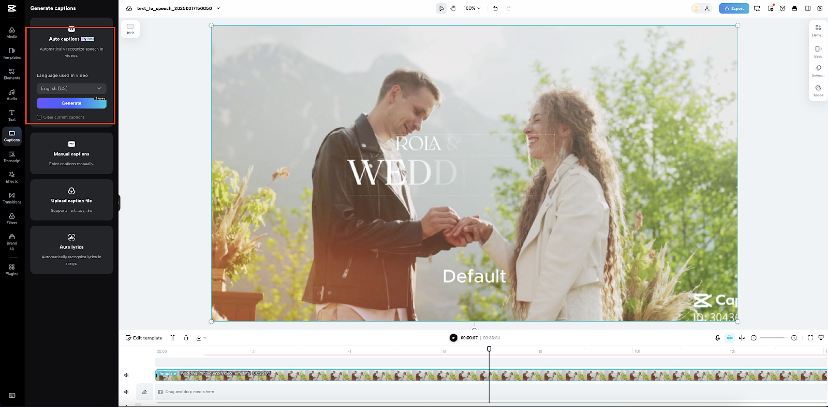The digital age has revolutionized communication, transforming how we connect and share information. From simple text messages to advanced voice recordings, technology has continually redefined interaction. One of the most impactful innovations is the ability to convert text into speech, seamlessly bridging written and spoken communication. This advancement not only enhances convenience but also promotes inclusivity, reshaping how we access and engage with information in a more accessible way for all.
FOOD NEWS: 10 celebrity chef restaurants to try in Arizona
Text-to-speech (TTS) technology is quickly becoming an indispensable tool for content creators, educators, and businesses alike. TTS allows you to easily turn written words into spoken language, making your content more accessible to diverse audiences. With the ability to customize voice tones, accents, and speeds, TTS offers a unique way to enhance engagement and improve accessibility.
Bridging gaps with text-to-speech innovation
The impact of text-to-speech technology extends far beyond its core function of turning written words into spoken audio. Its true strength lies in its versatility and user-friendliness. From producing engaging audiobooks to powering virtual assistants, this technology has revolutionized accessibility and convenience. It supports individuals with reading challenges, streamlines voiceovers for content creators, and opens doors to a variety of creative possibilities. As the demand for more personalized and precise solutions grows, text-to-speech systems continue to evolve, offering adaptive features tailored to diverse user requirements.
For example, if you’re looking for a text to speech free tool, you’ll find that modern platforms offer great customization. These tools often come with multiple language options, various voice types, and even distinct regional accents. Such flexibility ensures that users can find the perfect voice for their project, whether it’s for educational content, entertainment, or business communication.

How text-to-speech enhances accessibility and efficiency
One of the most significant benefits of text-to-speech technology is its ability to improve accessibility. It allows individuals with visual impairments or dyslexia to access text-based content by hearing it instead. By converting digital text into spoken words, this technology ensures that everyone, regardless of ability, can engage with the content.
For content creators, text-to-speech opens up new avenues for efficiency. Imagine having the ability to quickly generate voiceovers for videos, podcasts, or any multimedia content. Instead of recording your voice or hiring a professional, you can use text to speech feature to instantly transform your script into audio. This process is cost-effective, saves time, and eliminates the need for complicated recording setups.
Text-to-speech is also incredibly useful for improving productivity. For people who find it easier to listen rather than read, it can help them consume large amounts of information quickly. Whether it’s an article, report, or eBook, text-to-speech allows users to multitask and absorb information while doing other things, such as driving or exercising.
AI-powered communication tools: Shaping the future of connection
As AI continues to develop, text-to-speech is becoming more advanced. The ability to fine-tune voice tones, speech speed, and pitch ensures that spoken words sound more natural than ever before. It’s not just about reading the text but making the voice feel authentic, whether it’s delivering a formal announcement or creating a casual conversation.
An exciting development in TTS technology is the integration of voice changer. These tools allow you to transform a standard voice into something more engaging, adding effects, accents, or character to your content. When combined with an AI caption generator, this creates an even richer, more accessible experience for the audience.

How to use text-to-speech technology
If you’re wondering how to get started with text-to-speech, it’s easier than you might think. The process typically involves three simple steps:
Step 1: Enter or generate text
Open CapCut Online and navigate to the Text-to-Speech tool. You can either type your own text or use the AI-powered script generator to create content based on your chosen topic. The tool supports up to 5000 characters, allowing flexibility for different types of projects.

Step 2: Choose a voice and adjust settings
After entering your text, browse the Library on the right-hand side to select a voice that matches your project’s tone. CapCut offers a wide range of voices that can be filtered by gender, age, style, and emotions to suit your content perfectly.
For additional customization, you can adjust the speed and pitch of the selected voice to create a more natural and engaging output. Click Preview 5s to listen to a short sample before finalizing. Once satisfied, click Generate to convert your text into speech.

Step 3: Download or refine your voiceover
Once the text has been converted into speech, the processed audio will appear in the Results section. Listen to the final output and, if necessary, click Edit more to tweak the voice settings further. If you’re happy with the result, click Download to save the file and use it in your project.

With CapCut Online’s Text-to-Speech tool, creating professional-quality voiceovers has never been easier. Experiment with different voices and settings to bring your content to life.
Conclusion
Text-to-speech technology has certainly redefined how we communicate, offering new ways to experience and share information. With the help of innovative tools like voice changers and AI caption generators, text-to-speech continues to evolve and provide exciting possibilities. Whether you’re a content creator, educator, or simply looking to improve your accessibility, text-to-speech can help you enhance your digital presence. As these tools continue to develop, they will undoubtedly offer even more sophisticated ways for people to communicate, ensuring that the future of digital interaction is more inclusive, diverse, and engaging than ever before.



